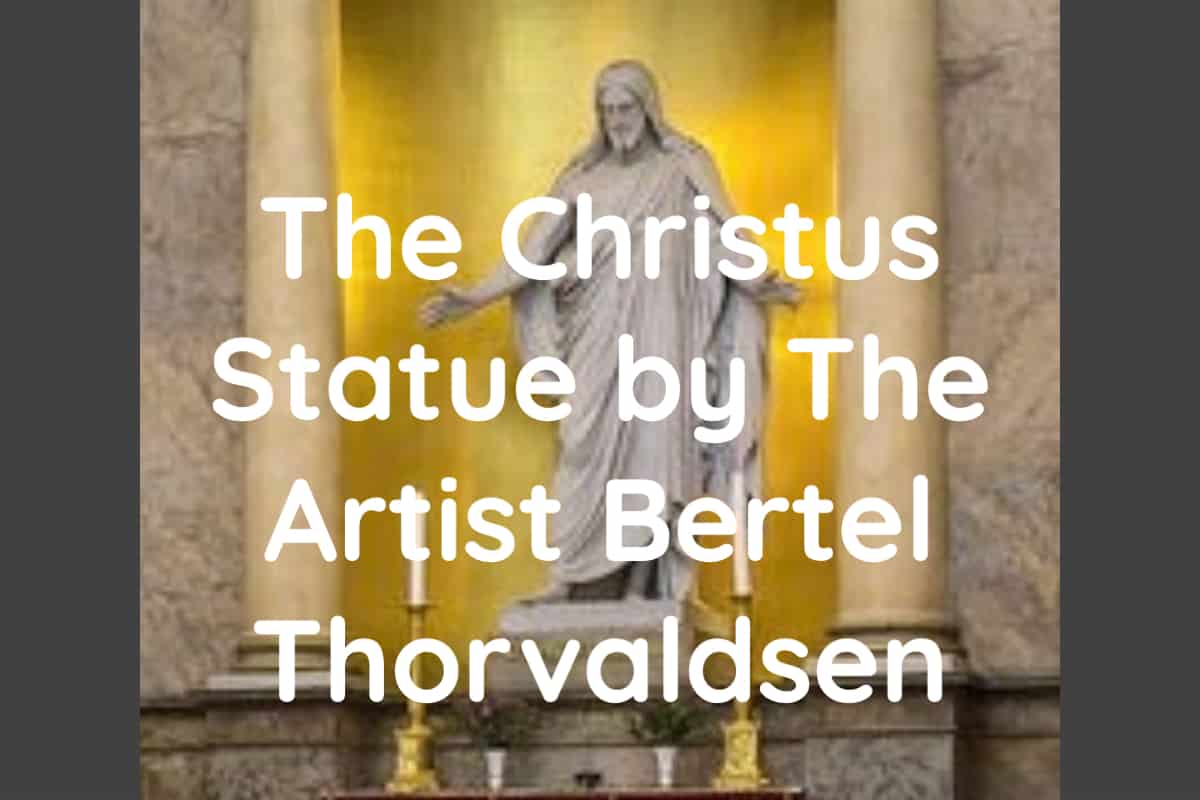The Christus statue is one of the most well-known statues of Christ. The sculpture is the work of the 19th-century Danish artist Bertel Thorvaldsen.
Bertel Thorvaldsen was born into poverty in Copenhagen Denmark. He was accepted to the Royal Danish Academy of Art at a young age. While he was there he won an award that gave him a stipend to travel to Italy to further his art education. His first real artistic break came when he received a commission for the Jason statue.
Table of Contents
- 25 Captivating Details About Bertel Thorvaldsen (1770-1844), the Sculptor of the Renowned Christus Statue
- Fact 1: Bertel Thorvaldsen Was Born in Copenhagen, Denmark
- Fact 2: Bertel Thorvaldsen Grew Up in Humble Circumstances
- Fact 3: His Father Was a Wood Carver
- Fact 4: Was Admitted to the Royal Danish Academy of Art
- Fact 5: The Eighth of March is His “Roman Birthday”
- Fact 6: Mentored by Georg Zoega, A Danish Archeologist, and Numismatist
- Fact 7: Never Married But Had Two Children
- Fact 8: He Studied Under Asmus Jacob Carsten, A Danish – German Artist
- Fact 9: The First Success Was the Model of the Jason Statue
- Fact 10: Work Was Not Selling, Almost Left Rome
- Fact 11: Took 25 Years To Finish the Sculpture of Jason
- Fact 12: Hired Assistants to Help Him With His Work
- Fact 13: Falls in Love Again and Again
- Fact 14: His Statues Are Throughout Europe
- Fact 15: The Christus Statue
- Fact 16: The Christus Statue – Church of Our Lady, Copenhagen
- Fact 17: Returned to Denmark in 1838 As A National Hero
- Fact 18: Thorvaldsen Museum Was Built In His Honor In Denmark
- Fact 19: Thorvaldsen’s Work Is Also In Other Major Museums
- Fact 20: The Sonne Frieze Around the Museum Tells the Story of Thorvaldsen’s Return
- Fact 21: Bertel Thorvaldsen and Hans Christian Andersen Were Friends
- Fact 22: Bertel Thorvaldsen Died on the 24th of March 1844
- Fact 23: The Christus Statue and The Church Of Jesus Christ of Latter-day Saints
- Fact 24: Replicas Of the Christus Can Also Be Found In Other Places
- Fact 25: Thorvaldsen’s Artistry and Mastery Live On In His Work
- Frequently Asked Questions
- Related Questions
25 Captivating Details About Bertel Thorvaldsen (1770-1844), the Sculptor of the Renowned Christus Statue
The Christus statue, an iconic representation of Christ, stands as a testament to the artistic mastery of Bertel Thorvaldsen, a preeminent 19th-century Danish sculptor. Born into humble beginnings in Copenhagen, Denmark, Thorvaldsen’s prodigious talent in art was recognized early, leading to his admission into the Royal Danish Academy of Art.
His artistic journey took a significant turn when he won a scholarship to study in Italy, a move that greatly influenced his style and career. It was in Italy where Thorvaldsen achieved his first major success with the commission of the Jason statue, setting the stage for a career marked by remarkable sculptures and contributions to the art world.
This commission led to his success in Italy and throughout Europe. He has many statues in major cities around Europe. Thorvaldsen returned to Denmark in 1838 as a national hero. He was commissioned to sculpt the Christus statue at the Church of Our Lady in Copenhagen. There is the Thorvaldsen Museum in Denmark which has a large collection of his artwork.
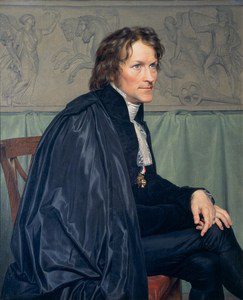
Bertel Thorvaldsen’s story is a rags-to-riches story that is filled with many interesting facts: Here are our top 25 facts about this life, work, and legacy:
Fact 1: Bertel Thorvaldsen Was Born in Copenhagen, Denmark
Bertel Thorvaldsen was born in Copenhagen Denmark on November 19th, 1770. There are some accounts that list his birthdate on the same date but in 1768.
His birth certificate has never been found, so we are really not sure what year he was actually born. The only record they have been able to find was his confirmation in 1787.
His father, Gottskalk Thorvaldsen was originally from Iceland but had settled in Denmark. His mother was Karen Dagnes a Jutlandic peasant girl whose father was a Parish Clerk, Jutland was a part of Denmark that encompasses part of present-day Northern Germany.
Fact 2: Bertel Thorvaldsen Grew Up in Humble Circumstances
Bertel’s childhood in Denmark was very humble. His father, a woodcarver also had a bad drinking habit. This slowed his father’s career and placed the family in dire circumstances.
There is not much known about his early schooling, as he may have been entirely homeschooled. He never did become very good at writing and never acquired the fine culture and knowledge that artists of his day were supposed to have.
Fact 3: His Father Was a Wood Carver
We know that Bertel Thorvaldsen’s father was a woodcarver. He worked at the shipyards in Copenhagen carving the large decorative wood carving the ships would have on them during this period of time.
We assume that it was from his father that he learned some of his basic carving and other skills.
We do know that later when he was older and studying at the Academy, Bertel would study at the academy during the day and then help his father with his wood carving at night.
Fact 4: Was Admitted to the Royal Danish Academy of Art
Bertel Thorvaldsen was admitted into the Royal Danish Academy of Arts in 1781. He was 11 years old when he was accepted. He applied to the academy with some help and encouragement from some friends.
He first entered the Academy as a draftsman. Upon entering the Academy he very quickly showed great talent. In 1786 he was able to be admitted to the modeling school of the Academy.
He started to see a lot of success at the Academy. His works won the coveted Silver Medal. In 1793, he also won the prized Gold Medal for his relief of St Peter Healing the Crippled Beggar. Because he won the Gold Medal this allowed him to get a stipend so that he could continue his art study in Rome.
Fact 5: The Eighth of March is His “Roman Birthday”
Bertel Thorvaldsen left Copenhagen in August of 1796 but did not land in Palermo Italy until January 1797. He then traveled on to Naples where he would study for a month and finally ended up in Rome on the 8th of March in 1797.
Since the date of his birth was never recorded, Bertel Thorvaldsen is said to have celebrated for the rest of his life, the 8th of March – the day he entered Rome – as his “Roman birthday.”
Fact 6: Mentored by Georg Zoega, A Danish Archeologist, and Numismatist
When he first arrived in Rome, he was taken under the wing or George Zoega an archeologist and numismatist who was living in Rome. A numismatist was a collector, special dealer, or scholar who used coins in their object-based research. Today we would probably simply call him a coin collector.
Fact 7: Never Married But Had Two Children
Thorvaldsen was a frequent guest at George Zoega’s home and it was on these visits that he met the former maid Anna Maria Uhden. At the time they met, she was married to a German archeologist. Anna Maria became Thorvaldsen’s mistress, and she left her husband in 1803 to be with Thorvaldsen.
In 1806 their son Carlos Alberto was born and in 1811 their daughter Elisa was born. In 1811, their son Carlos Alberto died in a tragic drowning accident.
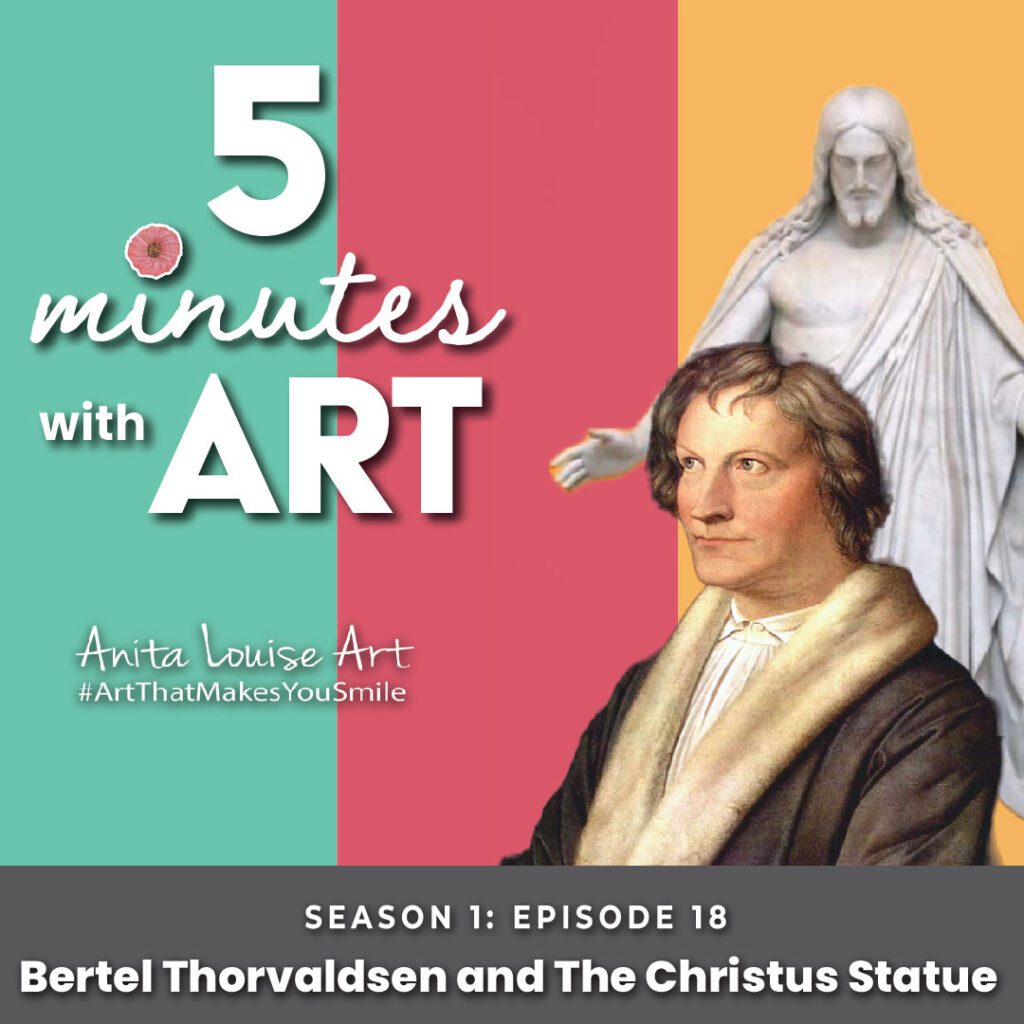
Listen To Our Podcast About Bertel Thorvaldsen and The Christus Statue by clicking here.
Their daughter Elisa survived. Elisa married a much older Colonel Fritz Paulsen. They had two sons. One son settled in Sicily, Italy and another son immigrated to America.

Fact 8: He Studied Under Asmus Jacob Carsten, A Danish – German Artist
Thorvaldsen studied under Asmus Jacob Carsten, a Danish-German artist who was living in Rome. Carsten was known to be one of the most committed artists of the German Neoclassicism period.
But he was also a very erratic character who was known to have a difficult personality. Many of hs projects were either left unfinished or destroyed so we do not have much of his art left.
But, Carsten was a master of handling the classical themes in his art. This became a source of inspiration for Thorvaldsen.
Fact 9: The First Success Was the Model of the Jason Statue
Thorvaldsen’s first real success came in 1801 when he created the model for the statue Jason. This model was highly praised by Antonio Canova, the most popular sculpture in the city of Rome.
Thorvaldsen’s work is considered to be an outstanding representation of the Neoclassical period in sculpture. In fact, Thorvaldsen’s work is often compared to the work of the famous Neoclassical sculptor Antonio Canova.
Canova was not only well known in Europe but also at the request of Thomas Jefferson, he made the statue of George Washington for the State of North Carolina.
Fact 10: Work Was Not Selling, Almost Left Rome
But despite his success with the model of the Jason statue, his work was very slow to sell. The stipend he had received had just about run out, so Thorvaldsen was planning to leave Rome and return to Denmark as he was no longer able to financially survive in Rome.
In 1803 just as he was ready to return back to Denmark, he received the commission to carve the statue of Jason in the marble form from Thomas Hope, a very wealthy English art patron. This commission helped to guarantee his success as a sculptor. He did not return to Denmark for many more years.
Fact 11: Took 25 Years To Finish the Sculpture of Jason
It took Thorvaldsen over 25 years to actually finish the marble sculpture of Jason. Thorvaldsen started to become a very busy man with this new commission and other commissions he received.
Here are some of his other commissions and works he also completed during this time:
- Achukkes and Bruseis- started in 1803 this was his first themed relief
- Dance of the Muses at Heliconr – completed in 1804.
- Cupid and Psyche Group – also completed in 1804.
Fact 12: Hired Assistants to Help Him With His Work
Thorvaldsen became so successful during this time that he hired several assistants. The assistants would help him to cut away most of the marble, while Thorvaldsen would do the sketching of the pieces and also all the finishing touches.
In fact, the statue of Adonis which was commissioned by Ludwig ! of Bavaria in 1808 and completed in 1832 is one of the few statues of this period that was carved solely by Thorvaldsen’s own hand. This statue of Adonis is also thought to be the one work that is closest to the antique Greek ideals.
Fact 13: Falls in Love Again and Again
In the spring of 1818, Thorvaldsen became very ill. It was during this time that he was nursed by a Scottish nurse named Francis MacKenzie. Thorvaldsen proposed to Francis MacKenzie in 1819, but less than a month later the engagement was canceled.
By the time the engagement was broken off, Thorvaldsen had fallen in love with another woman, Fanny Casper.
He was torn between the love of these women and also Anna Maria Uhden, the mother of his daughter Elisa. He never did decide whom to marry and remained single his entire life.
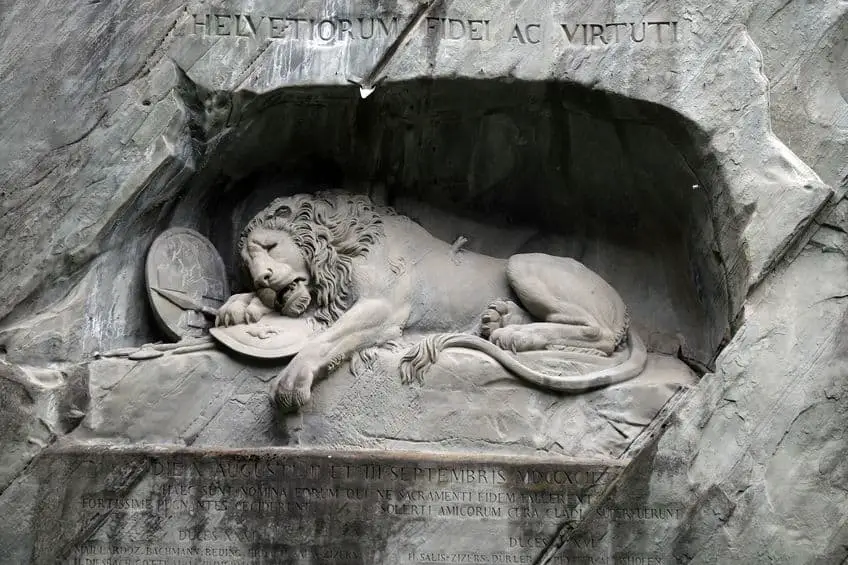
Fact 14: His Statues Are Throughout Europe
Bertel Thorvaldsen became so successful that his statues can be found throughout Europe.
Here is some of his more notable work:
- Tomb of Pope Pius VII in Rome, Italy – Created Tomb monuments for the Pope in Rome. This was a great honor as he was not Catholic.
- Gutenberg Sculpture in Mainz, Germany – Memorial to the inventor of the printing press Gutenberg. This is in the public square in Mainz, Germany.
- Copernicus Sculpture in Warsaw, Poland – The statue of Copernicus the astronomer in Warsaw, Poland.
- Prince Jozef Poniatowski in Warsaw, Poland – He produced as Equestrian statue of Prince Jozef Poniatowski that in at the Presidential Palace in Warsaw, Poland.
- Lion Monument in Lucerne, Switzerland – This monument commemorates the sacrifice of more than six hundred Swiss Guards who died during the French Revolution.
Thorvaldsen became such a success that eventually he took on many assistants and had over five studios in Rome helping him with his sculptures.
The statue of Copernicus was cast in bronze and is in 1973 and was installed on Chicago’s lakefront on Solidarity Drive near the heart of the city’s museum campuses.
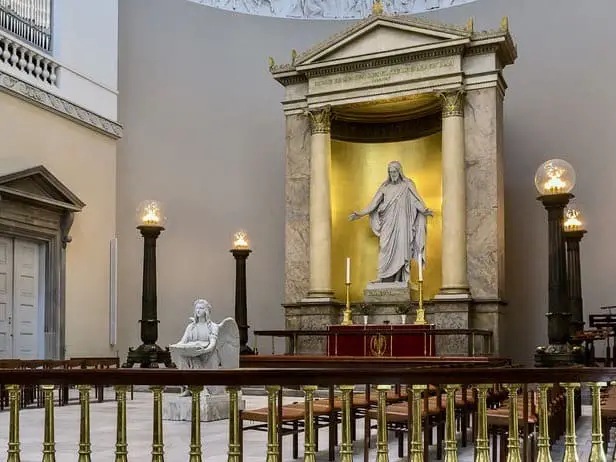
Fact 15: The Christus Statue
One of Thorvaldsen’s most well-known statues is the 19th-century Carrara marble statue of the resurrected Jesus and the twelve apostles.
These statues were all completed in 1838 and are located at the Evangelical Lutheran Church in Denmark’s Church of Our Lady.
The actual Christus Statue was completed in 1821 but other statues for the church were completed later. The Christus statue is 3.45 meters high and the inscription on the base of the statue says “Kommer Til Mig” or Come to Me along with a reference from the Bible of Matthew 11:28.
What is interesting about this Christus statue is many of the statues of Christ during this time frame have Christ with his hands stretched out like He is hanging on the cross. But Thorvaldsen’s statue has Christ’s hands open but also down as if Christ is ready to scoop us up into His arms.
This meaning that Christ is there for us at all times and will scoop us up into His arms at any time gives this statue of Christ an added powerful meaning.
The Christus was not very well known outside Denmark until in 1896 when an American textbook writer wrote:
“(The statue is) considered the perfect statue of Christ in the world.”
American Textbook (1896)
Fact 16: The Christus Statue – Church of Our Lady, Copenhagen
One of Bertel Thorvaldsen’s most replicated and recognized works today is the Christus Statue. This is because it has been replicated so many times. The Christus Statue is at the Church of Lady (Vor Frue Kirke) in central Copenhagen.
Here is some information about the Church of Our Lady in Denmark:
- The church was constructed of limestone in 1187. At this time it was called St Mary and was a Catholic Church.
- In 1314 a fire destroyed the limestone completely and it was rebuilt with oversized red bricks. The style of the building was Gothic Style.
- In 1479 a school was built as part of the church. This school later became the University of Copenhagen.
- The Protestant Reformation was hard on St Mary’s In December 1530 hundreds of citizens stormed St Mary’s and destroyed every statue and the gold altars. The name of St Mary was then also changed and the church became Our Lady’s Church, a Lutheran Church.
- From the late 1500s to the early 1800s the church was destroyed and rebuilt a few times.
- In September 1807 the church fell victim to the bombardment of Copenhagen by the British Royal Navy, It was after this period that Christian Frederick Hansen, one of the city’s finest architects rebuilt the church in the Neoclassical style.
- Bertel Thorvaldsen was commissioned to carve the statues of Jesus and the apostles for the newly rebuilt church. The statue of Christ became known as the Christus Statue.
- Thorvaldsen also carved and donated the baptismal font that stands in front of the Christus statue as a personal gift to the church.
- This is the church that many members of the Danish Royal Family are married in, and the Coronation of the Danish Kings takes place.
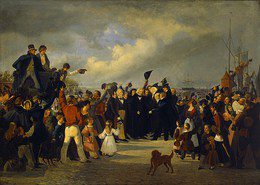
Fact 17: Returned to Denmark in 1838 As A National Hero
After having lived in Italy for over 40 years, in 1838 Thorvaldsen returned to Denmark to live. He became the first and to this day the only person to be granted the “freedom of the city of Copenhagen.” He truly came back to Denmark as a National hero, as he was the first internationally acclaimed Danish artist.
This is quite a feat for a poor boy from humble circumstances who seems to have hardly had much formal education. Bertel Thorvaldsen left Denmark many years ago to come back to his native country as one of the most celebrated artists of all time.
In fact, Bertel Thorvaldsen was one of the most famous artists of 19th-century Europe. He created works for the Pope, Napoleon, and many of the Royal families throughout Europe.
Fact 18: Thorvaldsen Museum Was Built In His Honor In Denmark
In 1848 the Thorvaldsen Museum was built in his honor. It was the first museum to be built in Denmark.
Here are some facts about the Thorvaldsen Museum:
- The museum was built to specifically house the works of Bertel Thorvaldsen.
- The Architect of the Museum was Michael Gottlieb Bindesboll. The museum is inspired by the patterns and colors found in excavation sites of ancient cities in Pompeii and Herculaneum in Italy.
- The Architect Binbesboll also lived in Italy and was close friends with Thorvaldsen.
- The museum is still standing and operating today and has a huge collection of Thorvaldsen’s work.
- Upon his death, Thorvaldsen donated his art to the museum and a large part of his personal fortune to the building of the Thorvaldsen Museum.
- Bertel Thorvaldsen is buried at the museum.
The Thorvaldsen Museum has the largest collection of Thorvaldsen’s work in the world. But his sculptures can also be found in major museums all over the world.
You can find out more about the Thorvaldsen Museum by clicking here.
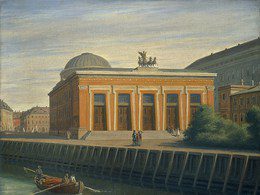
Fact 19: Thorvaldsen’s Work Is Also In Other Major Museums
Besides the Thorvaldsen Museum, which has a large selection of his work, many major museums around the world also show some of his work.
Here are some of the museums that also have Thorvaldsen’s work as part of their collections:
- The Louvre in Paris, France
- The Metropolitan Museum in New York City, USA
- The Victoria & Albert Museum in London, England.
- The Eremitage Museum in St. Petersburg, Russia
- The Alte Nationalgalerie in Berlin, Germany.
Fact 20: The Sonne Frieze Around the Museum Tells the Story of Thorvaldsen’s Return
The artistic frieze or relief murals around the walls of the museum tell the story of Thorvaldsen’s triumphal arrival back to Copenhagen in 1838.
Here is some information about the frieze on the walls of the museum:
- The artwork for the frieze was done by Jorgen Sonne, (1801-1890) a Danish Artist.
- In the afternoon of 17 September 1838, the ship Rota appeared at the entrance of the Copenhagen harbor, On this ship was Bertel Thorvaldsen and his artwork.
- The friezes depict a harborside filled with small boats and people welcoming home their artistic hero Bertel Thorvaldsen.
- A scene shows the moment Thorvaldsen steps his foot back onto Danish soil and is greeted with an official reception.
- Other scenes show the large crates and boxes of his statues and artwork being transported off the ship. All of this is with great difficulty as these are extremely heavy packages filled with carved marble statues.
- Hans Christian Andersen, the famous author is also shown on one of the boats greeting Thorvaldsen’s arrival. Other artistic and political figures of the day are also shown greeting the returning artist.
You can find out more about the Sonne Frieze at the Thorvaldsen Museum and see some of the photos of the frieze by clicking here.
Fact 21: Bertel Thorvaldsen and Hans Christian Andersen Were Friends
The famous Danish author Hans Christian Andersen (1805 – 1875) was a friend of Bertel Thorvaldsen. Though Hans Christian Andersen would have been quite a bit younger than Bertel Thorvaldsen, they met when Hans Christian Andersen traveled to Rome.
During his time in Rome, Hans Christian Andersen had visited the Danish Artistic colony where Thorvaldsen worked and they had become close friends. Hans Christian Andersen was also one of the people who was instrumental in helping to establish the Thorvaldsen Museum.
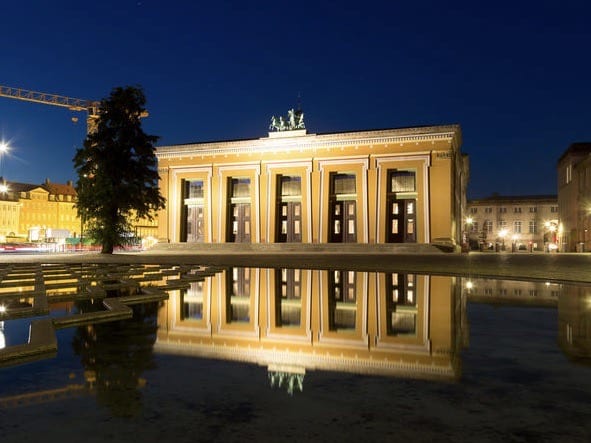
Fact 22: Bertel Thorvaldsen Died on the 24th of March 1844
Towards the end of 1843, Thorvaldsen fell ill and was not able to work as much as before. By January 1844 he was able to regain a bit of health and start to work again.
On the evening of March 24th, 1844 he was having dinner with his friend Adam Oehlenschlager, a Danish poet and playwright and the author Hans Christian Andersen.
The Thorvaldsen museum that the architect Bindesboll was working on was getting near completion. After the dinner as they were talking Bertel Thorvaldsen is said to have commented when speaking about the Museum getting near completion, he said:
“Now I can die whenever it is time, because Bindesboll has finished my tomb.”
Bertel Thorvaldsen
After the meal, just shortly after speaking these words, they went to the Copenhagen Royal Theatre, and Bertel Thorvaldsen died from a sudden heart attack. At his request, he is buried near his beloved art at the Thorvaldsen Museum.
Fact 23: The Christus Statue and The Church Of Jesus Christ of Latter-day Saints
In the 1950’s Stephen L. Richards, an Apostle for The Church of Jesus Christ of Latter-day Saints purchased a 3.5-meter (11-foot) replica of the Christus statue. He presented it to the then President of the Church, David O. McKay.
In 1966 the statue was placed in the church’s North Visitors Center at Temple Square in Salt Lake City Utah.
A second Christus was also replicated and used as a display for the 1964 New York World’s Fair. The display was to show that The Church of Jesus Christ of Latter-day Saints was a Christian church.
Since the display of the Christus at Temple Square and the 1964 World’s Fair, The Church of Jesus Christ of Latter-day Saints has displayed the Christus in their Temple Visitors Centers around the world including:
- Salt Lake City, Utah Temple, North Visitors Center
- Hamilton New Zealand Temple Visitors’ Center
- Laie, Hawaii Temple Visitors’ Center
- Los Angeles Temple Vistors’ Center
- Mesa Arizona Temple Visitors’ Center
- Mexico City Mexico Temple Visitors’ Center
- Nauvoo Illinois Temple Visitors’ Center
- Oakland California Temple Visitors’ Center
- Palmyra New York Temple Visitors’ Center
- London England Temple Visitors’ Center
- Portland Oregon Temple Visitors’ Center
- Rome Italy Temple Visitors’ Center
- St. George Utah Temple Visitors’ Center
- Washington DC Temple Visitors’ Center
- Paris France Temple Visitors’ Center
- San Paulo Brazil Temple Visitors’ Center
- Provo City Center Temple
The Church of Jesus Christ of Latter-day Saints also uses the Christus statue photos on its webpages and promotional materials.
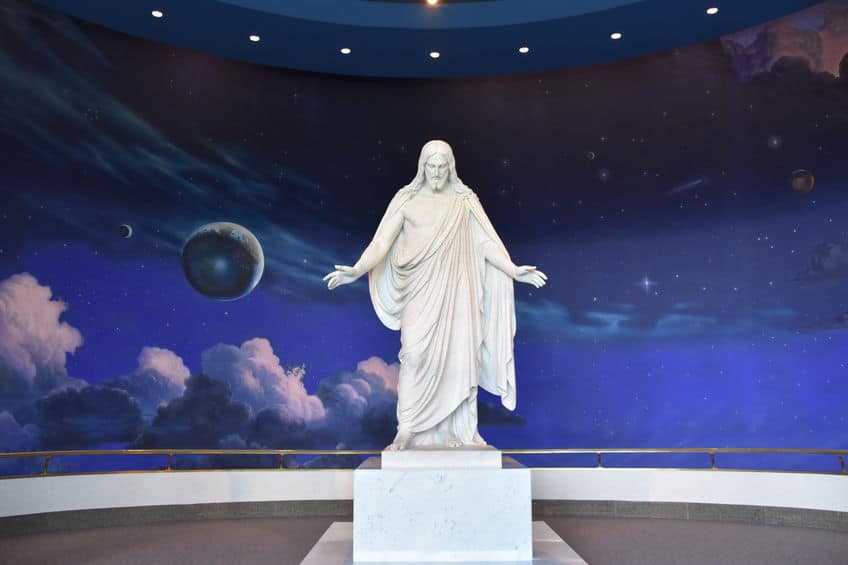
During the April 2020 General Conference of the Church of Jesus Christ of Latter-day Saints,. the church introduced their new official symbol for the church which includes an image of Bertel Thorvaldsen’s marble Christus statue.
In speaking of the new symbol of the church that includes the Christus statue image, Pres Russell M. Nelson, the President of the church said:
“This symbol will now be used as a visual identifier for official literature, news and events of the church,” he said. “It will remind all that this is the Savior’s church and that all we do, as members of his church, centers on Jesus Christ and his gospel.”
president russell m. nelson
Fact 24: Replicas Of the Christus Can Also Be Found In Other Places
Besides the use of the Christus Statue by The Church of Jesus Christ of Latter-day Saints, the Christus Statue replica can be seen throughout the world.
Here are some other locations where you can find copies of the Christus Statue:
- The John Hopkins Hospital in Baltimore, Maryland has a full-size replica of the Christus statue. The hospital refers to the statue as the Christus Consolator.
- The Forest Lawn Memorial Park in Glendale California on Cathedral Drive. The statue is referred to as “the Court of the Christus.”
- A draft of Christus is located at the Thorvaldsen Museum in Copenhagen.
- There is a bronze replica at the Luisenfriedhof 1 cemetery in Berlin, Germany.
- Another replica statue is also at the Luisenfriedhof III cemetery in Berlin, Germany.
- The Church of Peace in Potsdam, Germany also has a replica of the Christus. This has been on display there since the mid-1850s.
- Saint Petri Church in Stavanger, Norway has had the Christus statue replica since 1853.
- The Evangelical Church of Czech Brethren in Pilsen, Czech Republic also has a replica of the Christus statue.
- St John United Lutheran Church in Seattle, Washington has a copy of the statue. The church was originally a Danish-speaking church.
- St Paul United Methodist Church in Houston, Texas has a replica of the Christus statue.
In 2009 in six-foot Christus statue replica was constructed out of 30,000 white Lego pieces by the parishioners of the Onsta Gryta Protestant church in Vasteras, Sweden. Over 40 parishioners volunteered their time to assemble together the 30,000 tiny plastic blocks to create the replica of the Christus statue.
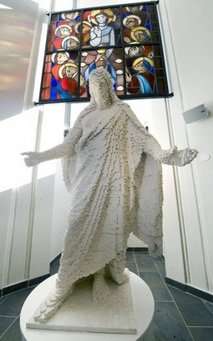
Fact 25: Thorvaldsen’s Artistry and Mastery Live On In His Work
Thorvaldsen was a master in how he was able to feel the lines and movements of his sculptures. All of his sculptures can be viewed from almost any angle without any compromise to their artistic impact. He was able to achieve all this why working with huge monumental size materials. He accomplished all this why adhering strictly to his neoclassical artistic beliefs.
Bertel Thorvaldsen is truly one of the most famous artists of 19th-century Europe. He not only created works of art for many famous people of his day, but he also created works of art that continue to inspire us today.
Bertel Thorvaldsen’s legacy and work live on through his many sculptures. One of his most important works was completed 200 years ago – The Christus statue. Thorvaldsen’s unique artistic mastery was able to capture Christ with his hands stretched out to us all – inviting everyone to – come unto Him.
Anita Louise Art is dedicated to art education, great artists, and inspiring others to find and create their art. We love art that uplifts and inspires. #ArtToMakeYouSmile! #ArtToMakeYouHappy!
If you are interested in seeing any of my art, you can find out more by clicking here. If you are interested in what inspires me and my paintings, you can discover more by clicking here.
We have a free newsletter and would love you to be part of our community; you can subscribe to the newsletter by clicking here. If you have any questions, I would be happy to talk to you. You can reach me, Anita, by clicking here.
Subscribe to our Anita Louise Art YouTube Channel filled with great videos and information by clicking here.
Join us for our podcast “5 Minutes With Art.” Spend just 5 minutes a week with us to discover and learn about great art and artists. You can find out more about our podcast by clicking here.
Frequently Asked Questions
Who was Bertel Thorvaldsen and why is he famous?
Bertel Thorvaldsen was a Danish sculptor who gained international acclaim for his neoclassical works, particularly his monumental sculptures of mythological and biblical figures
What is the most famous artwork by Bertel Thorvaldsen?
One of Thorvaldsen’s most famous works is the Christus sculpture, which depicts Jesus Christ in a serene and contemplative pose.
What are some of the key characteristics of the Christus sculpture by Bertel Thorvaldsen?
The Christus sculpture is characterized by its neoclassical style, with a smooth, polished surface and a serene expression on Jesus’ face.
What was the inspiration behind Bertel Thorvaldsen’s Christus sculpture?
Thorvaldsen was inspired by classical sculpture and sought to create a timeless representation of Christ that would be relevant to people of all cultures and faiths.
How did Bertel Thorvaldsen’s Christus sculpture impact the art world?
The Christus sculpture was widely admired for its beauty and realism, and helped to establish Thorvaldsen as one of the most important sculptors of the neoclassical era.
What other famous artworks did Bertel Thorvaldsen create?
In addition to the Christus sculpture, Thorvaldsen created many other important works, including the Lion Monument in Lucerne, Switzerland and a series of mythological figures for the Villa Borghese in Rome.
How did Bertel Thorvaldsen’s background influence his artistic style?
Thorvaldsen’s upbringing in Denmark and his training in Rome helped to shape his neoclassical style, which blended elements of classical Greek and Roman art with contemporary European aesthetics.
What was the process of creating a sculpture like the Christus by Bertel Thorvaldsen?
Creating a sculpture like the Christus required a great deal of skill and patience, involving the careful selection and preparation of materials, the creation of a detailed model, and the painstaking carving of the final sculpture.
What is the significance of the Christus sculpture in the context of religious art?
The Christus sculpture represents a significant departure from earlier depictions of Jesus, which tended to be more stylized and less emotionally expressive. Its realism and emotional depth helped to establish a new standard for religious art.
Related Questions
Who is the Danish Artist Carl Heinrich Bloch?
Carl Bloch, one of Denmark’s most famous artists, almost did not become an artist. His parents wanted him to join the Navy but he was consumed with art and proved early in life to be artistically gifted. Throughout his life, he painted many important paintings. One of his most important art commissions was to paint 23 scenes from the life of Christ at the Fredriksborg Castle in Denmark.
You can learn more about Carl Heinrich Bloch by reading our blog 18 Facts About The Artist Carl Heinrich Bloch (1834 – 1890) by clicking here.
What Are The Characteristics Of The Arts And Crafts Movement?
The Arts and Craft Movement started in Britain and then swept over Europe and the United States. In the late 19th century, the Arts and Crafts Movement started to become both popular and very influential. It changed the way may artists around the world viewed their art. It also changed the way that artists saw the design of not just their artwork, but also buildings, wallpaper, fabrics, parks, cities, and objects in their homes, offices, and communities.
You can learn more about the Arts and Crafts Movement of Art by reading our blog What Are The Characteristics Of The Arts And Crafts Movement? by clicking here.

